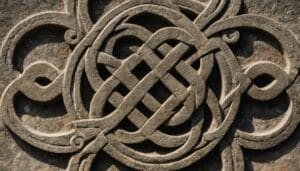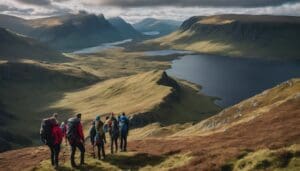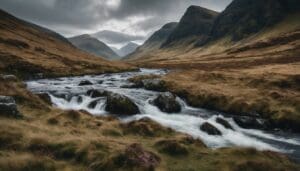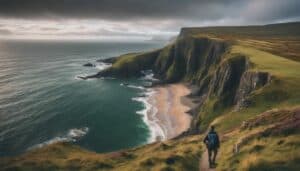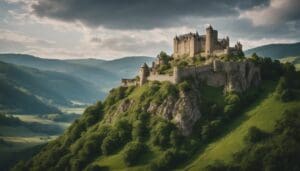Galway is Far Beyond a Former Fishing Village
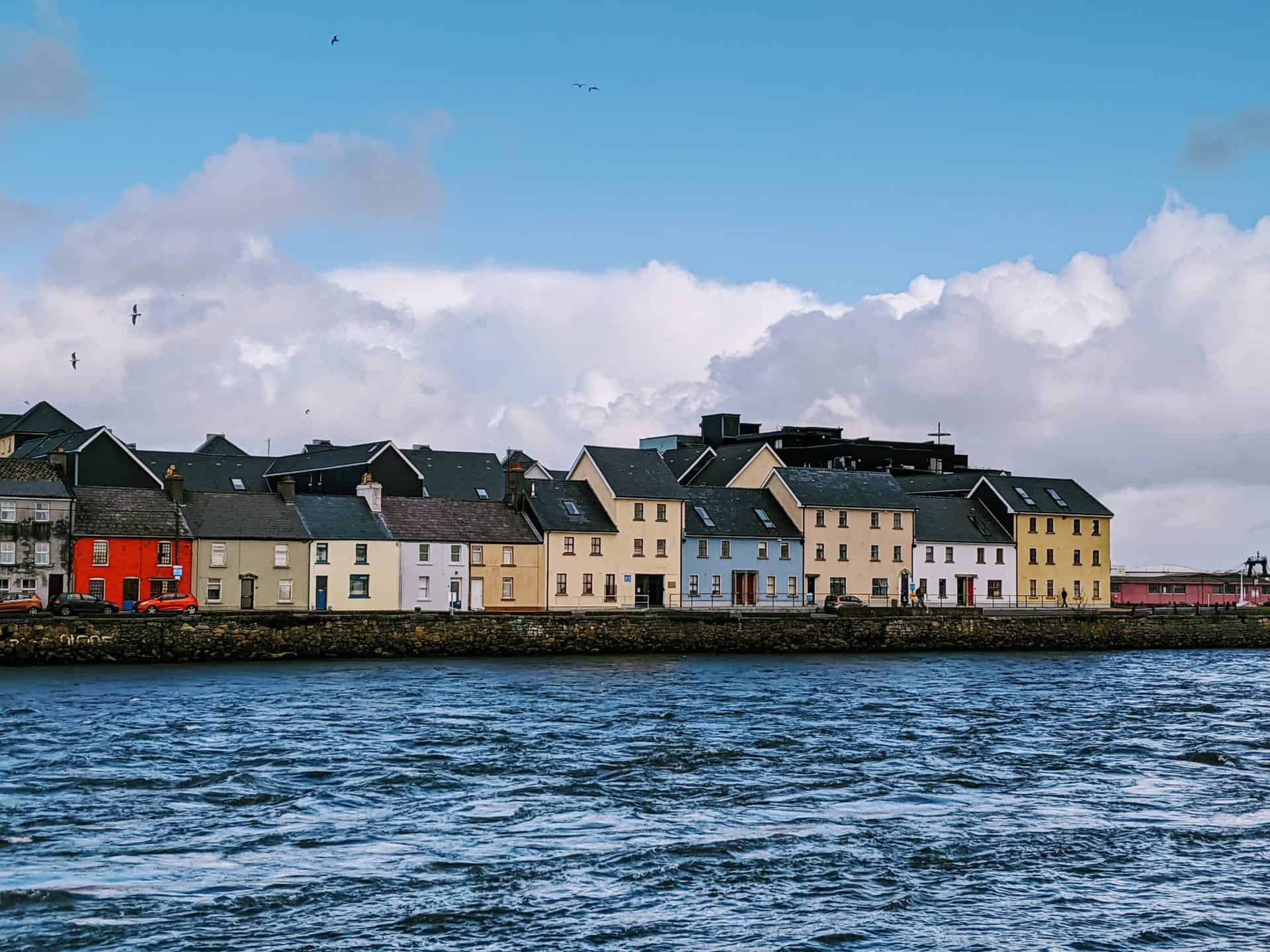
Updated On: April 16, 2024 by Salma Ihab
Since Ireland is a vast country, you will need to specify which part you will visit. If you’re up for exploring a field of marvellous wonders, the West of Ireland should be your next stop. County Galway lies in this part of Ireland. It happens to be one of the country’s most exceptional spots. The county has vast fields, barren and stone-walled boglands, rugged coastlines, and mountain ranges.
It may as well be one of Ireland’s wealthiest counties, with eye-pleasing scenery and natural wonders. As a visitor, a miscellaneous number of experiences are waiting for you; you shouldn’t miss them out. You’ll find exciting museums to tour and amazing parks to visit.
Over and beyond, you’ll meet the friendly locals and learn tons of fascinating stuff about their history, culture, and language. See all that the county has to offer to the world.
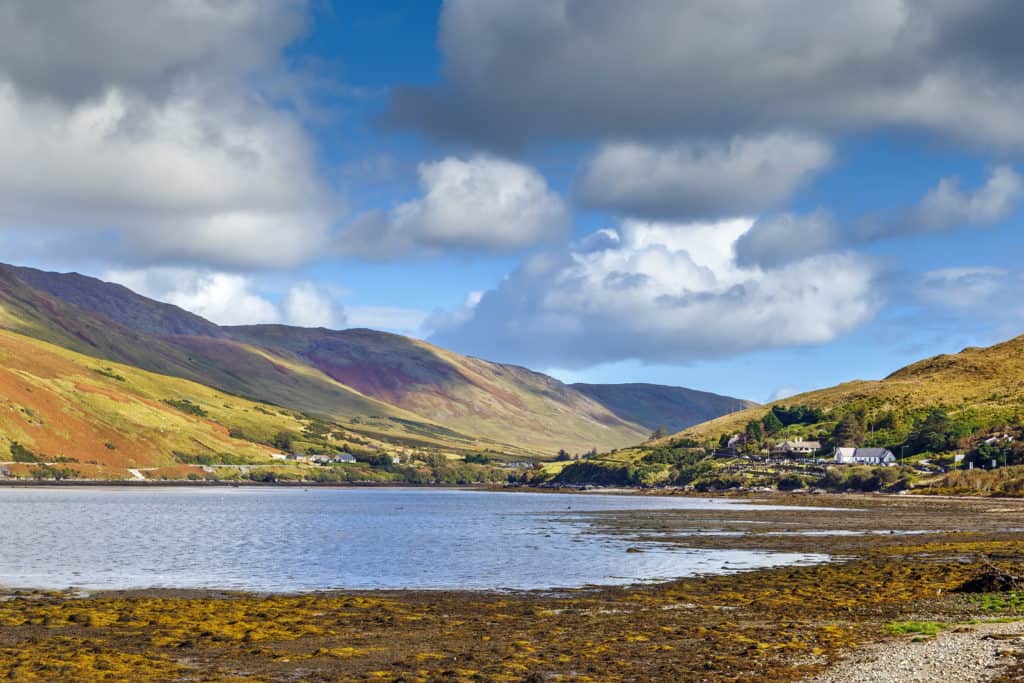
A Brief History of Galway City
Initially, Galway City used to be a small village for fishing. The city is near The Claddagh, where Galway Bay and the River Corrib meet. Thus, it was a perfect spot for fishing, which it had been famous for over the years. However, the nature of things was altered in 1232 when Richard De Burgo led his army into the town. He was the leader of the Anglo-Normans; they took over the land and carried on construction around the town.
They turned that small fishing village into a walled town. Although the walls are no longer there, some of them are still present near the Spanish Arch. They date back to around 1270, when they were first constructed.
In 1396, the city was no longer under the rule of the Anglo-Normans. Richard II agreed with the locals and handed his powers to fourteen merchant families. They were the most prominent families in the county, and people referred to them as the fourteen tribes of Galway. Those tribes savoured their independence and enjoyed being in power. However, they still had to keep under the rule of the British Crown.
Interesting Facts about Galway Bay. Click Here
A Successful Trading Centre
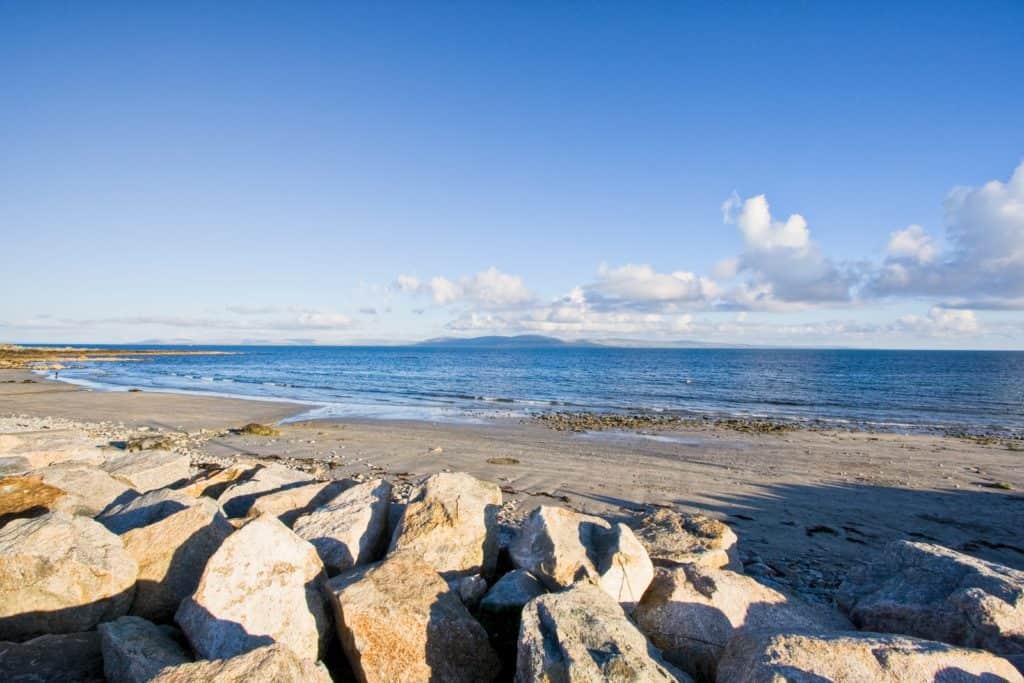
Galway became one of the most successful trading centres in Ireland, in particular, and in Europe, in general. Being on the Atlantic Ocean paved the way for the town to become a flourishing seaport for goods. They traded spices, fish, wine, and other goods, developing successful trade links throughout Europe.
At that time, Galway’s docks were always buzzing with the arrival and departure of ships worldwide. Thus, the city lived in prosperity with trading for centuries thanks to its strategic location on the coastal line.
Unfortunately, the decline had hit the town for an extended period since the arrival of Cromwell. It all started in 1651, so the seaports had to move to other parts of the country. Mainly, Dublin and Waterford were the new homes to Ireland’s seaport. Besides, before the decline, Galway had thriving trade links with Spain and Portugal. However, those countries stopped trading with Ireland during its weakening period.
More than a few years had passed until Galway could flourish once again. The town regained its prosperity and could enjoy it for as long as ever. Galway was an intriguing city once again, and we can clearly see this in the city’s physical development. Currently, you can enjoy the beauty of Galway and relive its history through its unique attractions.
Galway in the Modern Times
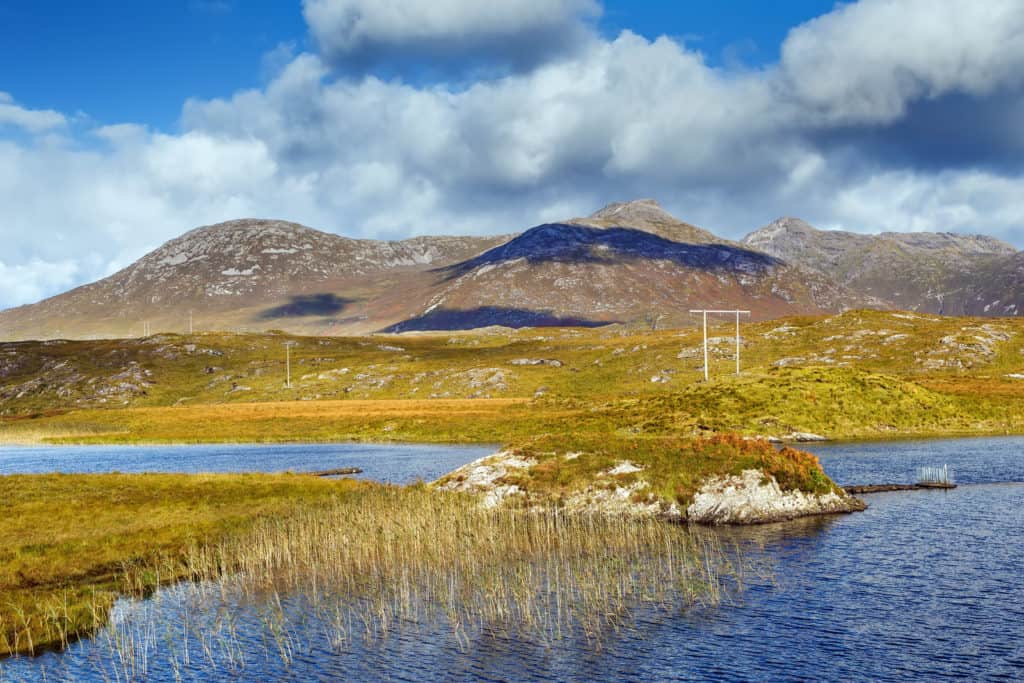
Nowadays, Galway is a modern European city that thrives on fascinating development and growth. It is more prospered than ever. The city is always busy with festivals attracting thousands of people everywhere, especially during summer.
It is usually called the Galway Arts Festival, with numerous events, races, and other fun activities. So, it is easy to imagine how crowded the city gets annually.
Besides, trading is at its finest once again, making the economy skyrocket. That is mainly because the town is on good terms with most, if not all, of the foreign countries. Another thing about that city is that it attracts visitors for more than just the annual summer festivals. It is famous for being the perfect destination to enjoy the world’s most picturesque sites.
There is more to the city than you can ever imagine. Even the streets are always buzzing with liveliness and potency with many busy cafés and colourful shops. You can enjoy watching the sunset over the county’s best spot, Galway Bay. Or, you can stroll around the town and check out the fisherman bringing the fishing village to its origin.
A Quick Glimpse at the 14 Tribes of Galway
Again, starting from the 13th century, Richard II handed his power over to the powerful merchant families of Galway. They ruled the city from the thirteenth century until the nineteenth century. More specifically, 14 tribes dominated the town’s social, commercial, and political affairs. They also ruled much of the area that surrounded the city. Interestingly, those tribes were not all Irish.
They came from diverse backgrounds, including English, French, Irish, Norse, Welsh, and more. During the English conquest, they were influential in extensive trading with Europe. Thus, they were granted power by Richard II at that time. However, those tribes avoided the natives who lived around the town back then. They detached themselves entirely from them. However, there came a time when the whole town bonded together against one enemy, the British rule.
The Dark Era of Cromwell
Interestingly, Oliver Cromwell was the first to call the merchant families “the Tribes of Galway.” He intended to insult and demean them with such naming. However, those families adopted the name for themselves with pride in an attempt to counter his offence.
When the Irish Confederate Wars started in 1641, the locals and the tribes of Galway United were in a revolution. The wars lasted from 1641 to 1653. Things began to further deteriorate during the arrival of Oliver Cromwell, the notorious leader of the British military.
He managed to overpower the country and conquer all forms of rebellion. Unfortunately, in 1652, the city had to surrender to the British powers. Just then, Cromwell started seizing all of the properties that belonged to the Tribes of Galway.
Their power had been demolished by then, especially after the English parliamentarians detained the Galway Corporation. They returned to power once again after Cromwell’s departure. Again, they could enjoy a prosperous life and bounce back under the reign of two kings.
In 1691, Galway underwent another rough patch during the War of the Two Kings. Once again, the tribes faced weakness and waned in their powers. Unfortunately, they never made it to the power ever again after their last fall down. Gradually, they shifted their power to the Protestant of the city. By the 19th century, Galway never heard from the Tribes again; they were gone for good.
The Most Interesting Places to Visit in Galway
As we previously mentioned, this city houses the most beautiful scenery in Ireland. It is even home to some sites where popular motion pictures were filmed. You can explore a wide array of tourist attractions and sites. So, let us get started.
Popular movies and TV shows were filmed in Ireland.
Aran Islands
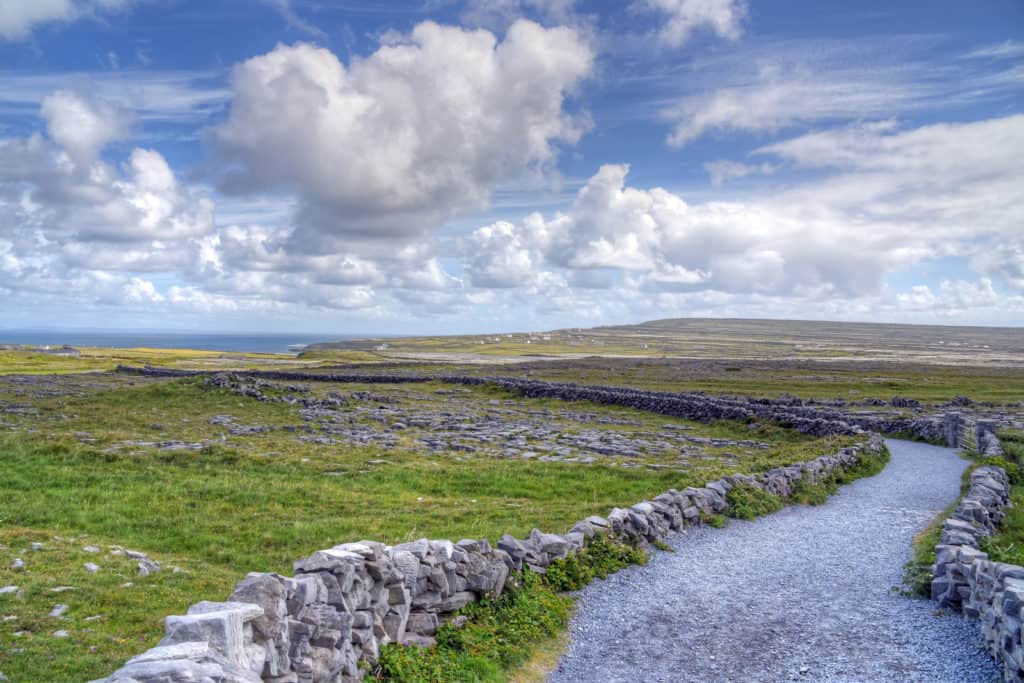
Have we ever mentioned Galway Bay before? It is a significant site in the county. Besides, it surrounds many more exciting places to explore. The Aran Islands are at the southeastern side of the mouth of the Bay. Three islands are the Big Island, Middle Island, and East Island. However, their Irish names are Inis Mór Island, Inis Meáin Island, and Inis Oírr Island.
Those three islands are significant for holding historic memorials; they are also famous for their geological formation. The islands have different linguistic heritage and cultures yet the Gaelic language remains dominant. In fact, the islanders born there happen to be bilingual, Irish and English.
Athenry
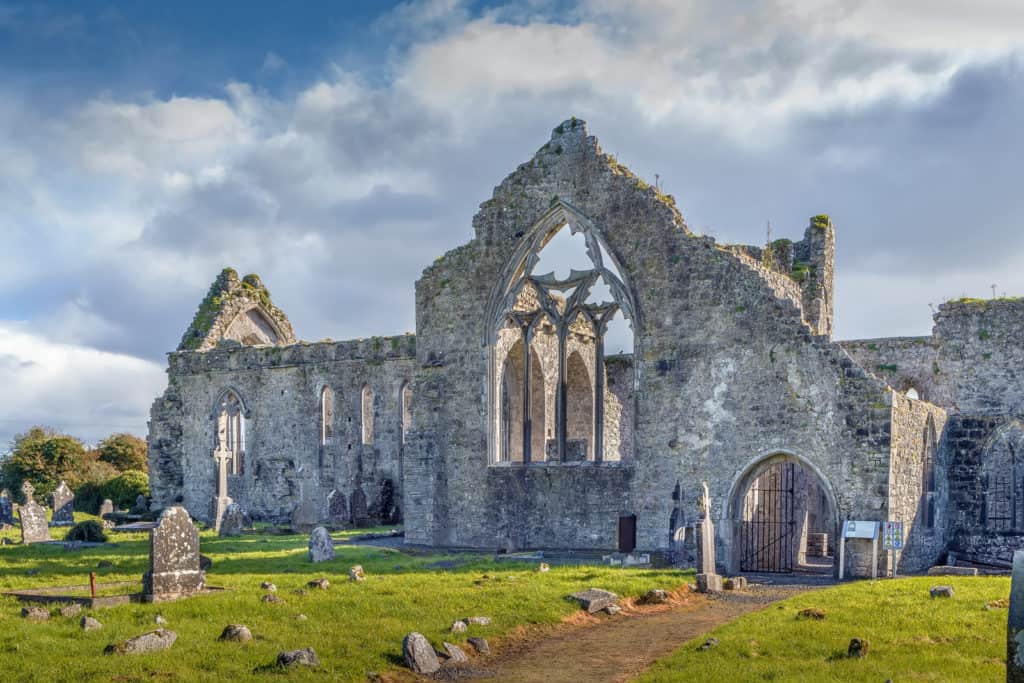
Athenry is a vast area of sole fields. However, it has walls and churches that belong to the medieval era and attract many visitors. The walls surround a beautiful castle that also dates back to the 13th century. You will enjoy your time there.
Aughnanure Castle
Ireland happens to have plentiful castles in almost all of its cities. Here is one of its splendid castles: Aughnanure Castle. It has been around since 1500 and was home to who was known as the ‘Fighting O’Flahertys’. Those folks resided around the castle and had power over the surrounding region for centuries. They were also the ones who resisted the Normans and defeated them.
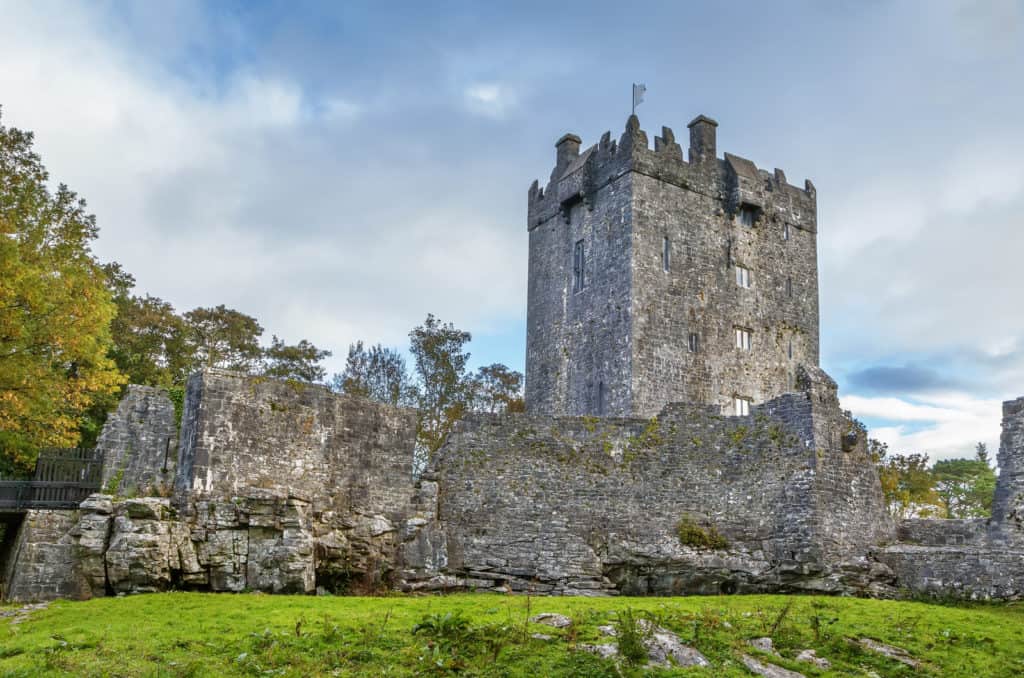
Outside the castle was an area surrounded by walls. People call it a bawn, and its remains still hang around the castle. Beneath the castle, the River Drimneen courses through caverns and caves. It used to surround three sides of the castle in the past, but it no longer does.
Brigit’s Garden
Gardens are usually unique destinations where you can spend your time. Brigit’s Garden is one of the most fascinating Irish sites. It covers over 4 hectares of meadows and woodland. This garden is a pure representation of Irish mythology and the heritage of the Celts.
It has four different gardens within, representing the Celtic festivals of every season. Those seasons include Lughnasa as Autumn, Beltane as Summer, Imbolc as Spring, and Samhain as Winter. There is also a café on the site where you can grab a drink.
Buckfast Plaza
Buckfast Plaza is a perfect place for party animals and people who love to socialize. It is found in front of the popular site the Spanish Arch. The locals usually head to that place to have booze drinks during the hot days of summer. It is full of life and energy.
Connemara National Park
Connemara National Park is a marvellous place that spans mountains, woodlands, hills, and bogs. Besides, the Gleann Mór, meaning the Big Glen, is in the park’s core. Through that glen, the River Polladirk courses. You can walk briskly up that glen or hike around the mountains.
Dun Aengus
Dun Aengus lies about eight kilometres west of Kilronan. It has gigantic drystone walls that stand right over the ocean. Dun Aengus is a fort with defensive limestone spikes surrounding it. Sources claim that the fort has been around for over 2000 years. Yet, it still flawlessly stands.
There is also a small visitor centre that provides the guests with a quick hike uphill to the fort. Despite the beautiful sightings, this place is a bit too dangerous. People will likely slip off the cliff’s edge; however, there’s guidance throughout your tour to keep you safe.
Dunguaire Castle
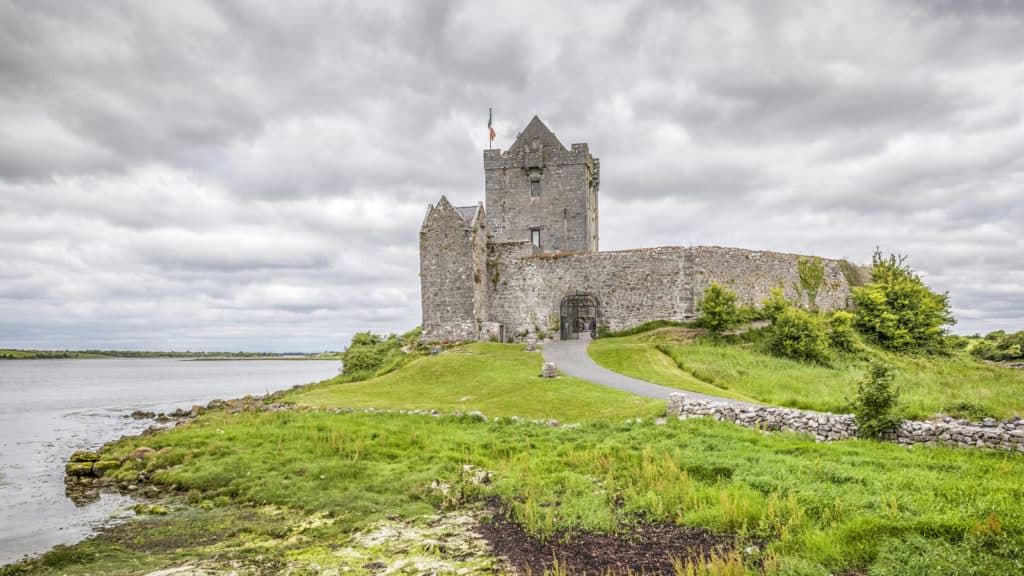
Before the existence of the Dunguaire Castle, Guaire Aidhne, the royal palace, occupied the building. It was a 6th-century palace that belonged to the King of Connaught. However, when Lady Christabel Ampthill bought the palace, she made renovations and transformed it into a castle. She lived at that castle for almost two decades. You can tour that castle and climb the roof for superb scenery. The roof overlooks Kinvara and Galway Bay, so your eyes will be pleased.
Eyre Square
Eyre Square stands in the centre of the town where the bustling life pumps. This square dates back to the 18th century, but it now looks a bit different from what it was. The square is now made in honour of the American President, J. F. Kennedy. He was of Irish Descent, but not everyone knows this information.
On the northwest side of the square, you get into an old patrician mansion through a doorway named Browne’s Gateway. Over and beyond, there are many shops along the street that you can visit. There is also a modern shopping centre holding the name of the square.
Galway Cathedral
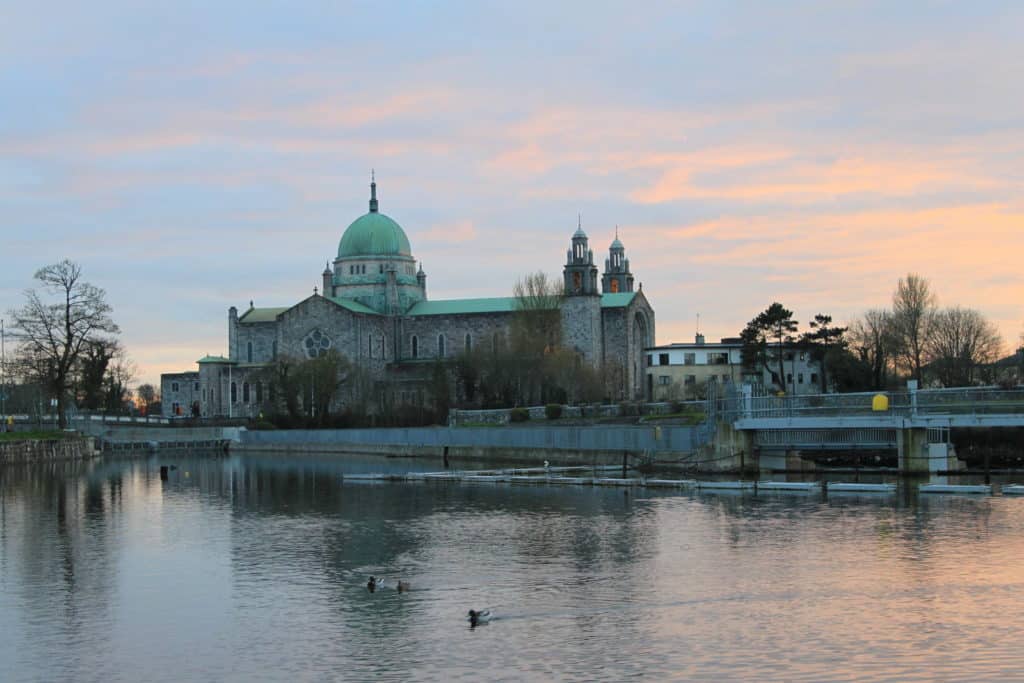
Galway Cathedral overlooks the River Corrib. You can reach the cathedral by walking from St. Nicholas’ for only eight minutes. This mesmerizing cathedral is deemed to be one of Europe’s most modern grand stone cathedrals. It’s been around since the late 50s, so it’s not as old as most other sites in Ireland. J.J. Robinson was the cathedral designer; he mixed different cultural styles, resulting in today’s fantastic cathedral.
The main architectural elements he used were Gothic and Romanesque. You can watch a splendid art collection, and beautiful rose windows inside the cathedral. It also houses the statue of the Virgin, which was made by Imogen Stuart. You can visit Nora Barnacle’s House on your way to the cathedral. It is the most miniature museum in Ireland; it belonged to James Joyce’s wife, Nora.
Galway City Museum
The City Museum is modern, revealing a long timeline of the city’s history. You can learn all about Galway from 1800 to 1950. The museum houses iconic objects that were used in the city. These include a hooker fishing boat and a collection of currachs. The latter were boats that tarred canvas covering their framework.
The people of Galway have been donating items of cultural and heritage value over the last three decades. This has helped to make up an exciting collection of over 1,000 objects.
Galway City Nightlife
Here the greatest attraction in the city is nightlife. This site targets almost everyone no matter their cultural background, age, or whatever. Galway is a lively city popular for its live musical performances and tranquillizing ambience. It is the best spot for having the ultimate entertainment and enjoying the constantly ongoing festivals. While roaming the city’s momentous streets, you will encounter many clubs, pubs, and lounges. They’re all ready to serve you the world’s best food and coffee so you can further enjoy your tour.
Galway Market
The street markets of this county are not to be missed. They have a fantastic carefree spirit that has been around for many centuries. The best part about the market is that farmers selling fresh goods are not the only thing you will see. There are also stalls that sell ready-made food, crafts, and arts of different forms. Those kinds of stalls and shops usually take place on Saturdays. However, the festive ambience is on all year long and gets better during summer. It is great to just wander around and appreciate Galway’s market scene.
Hall of the Red Earl
Richard de Burgo was the one who ruled the city before handing his power over to the 14 tribes. People called him the Red Earl, the ruler of the 13th century. During his reign, he erected a large hall as his power seat. The locals used to pass by that hall to win over the ruler. However, that hall was left in the wreckage when the 14 tribes took over the authority.
Not much attention was given to the ruined hall until 1997. The Custom House of the City was expanded, revealing many artefacts like gold and clay pipes. That Custom House was an exhibition of the history of the de Burgo Family and the city’s.
Inchagoill
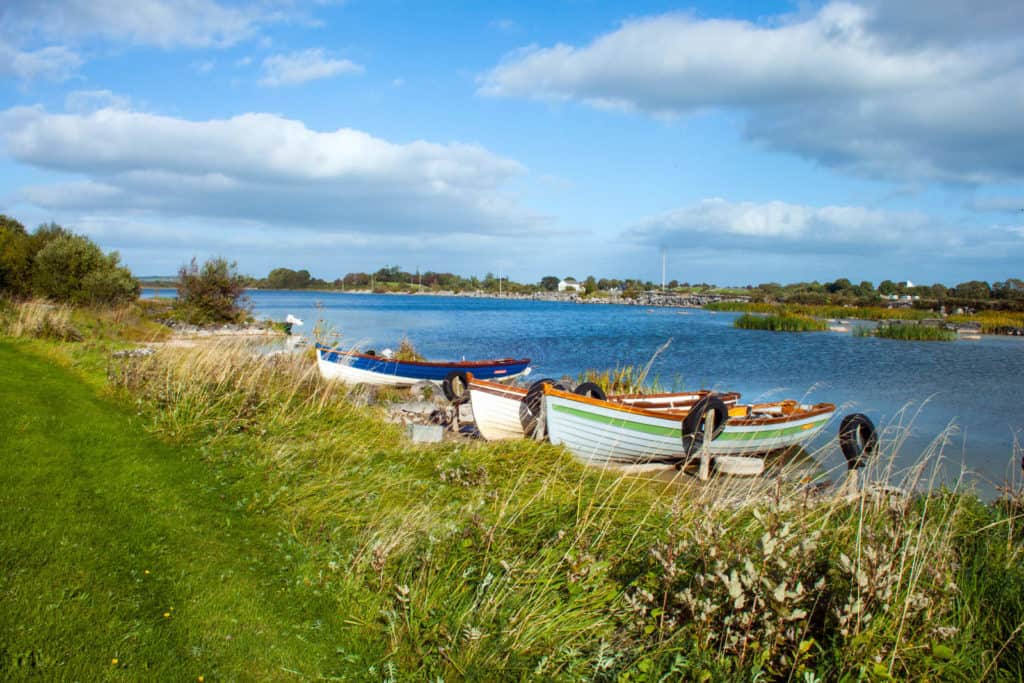
Inchagoill the largest island on Lough Corrib is left a bit lonely with ancient remains. It lies on the edge of the Lough Corrib Lake but is about two kilometres away. The island has a place called Molloy’s Boats, where you can rent your boat.
There is also an obelisk known as Lia Luguaedon Mac Menueh; it provides the island with a mesmerizing sighting. Lia means the stone, for it is a giant one. It has an inscription on it that sources claim to be Latin writing. They also believe that this particular inscription happens to be the second oldest Christian one in Europe. The oldest ones happen to be those writings present in the catacombs in Rome.
Inis Oírr
Inis Oirr is an Island where many amazing motion pictures were filmed. It is a famous masterpiece in the world of Hollywood movies. The island’s official name is Inis Oirthir, which means east island. On the other hand, another name that is more traditionally used is Inis Thiar, meaning rear island. Inis Oirr is one of the three Aran Islands that sit close to the Bay. It is also said that it is the second smallest of them.
Kenny Gallery
Kenny Gallery is another spot that you should visit while in Ireland. Before becoming a gallery, it was a bookshop run by a modest family during the Second World War. After a while, the family introduced arts and crafts into their humble shop. Now, it has become a gallery for displaying extensive art, giving the opportunity for local and international artists to get exposure.
Besides being a gallery, it maintained its status as a bookstore. But, now, it is a huge one that houses half a million books of different genres. You can also find the bookshop online; it launched its website in 1994. It is professed that it is the second bookshop in the world to ever have an online platform.
Kinvara
Kinvara is an enjoyable site that acts as a small fishing port with a rustic nature, monastery, and castle. There is also a traditional pub that dates back to 1865. It is called the Green Bar, and it has shelves displaying hundreds of whiskey bottles.
Lynch’s Castle
Well, to be clear, there is no castle anymore. Sadly, the 14th-century castle once the finest in Ireland had become a bank. On the other hand, the external design of that bank remains the same. It still looks like a castle. This building belonged to the Lynch family, among the ruling tribes and the most powerful.
MV Plassy
This spot is quite interesting. MV Plassy is an abandoned west coast that you can find in the wilds of the Aran Islands. It is wreckage on the city’s beach, but people refer to it as a beautiful failure. You will realize that most professional photographers would be able to discover such a unique landmark.
Patrick Pearse’s Cottage
That little hut is a fantastic place to relax and spend quality time solely for yourself. In fact, Patrick Pearse spent a lot of his time at that cottage that sits on the shore of a far-flung lake. He built it in 1909 and used it to write his plays and short stories. A few miles away from the cottage, you will find a centre for visitors interested in Pearse’s life. The centre shows his life in detail and exhibits his writings and play.
Salthill Beaches
Salthill is the best spot for swimmers and those who long for relaxation under the sun. It consists of more than a few smaller beaches with ridges separate between them. The place is open for tourists and locals alike and is pretty safe for everyone. Besides, it is ranked as Blue Flag Beach. Such ranking guarantees the safety of the area and the high standards of the quality of the environment. Thus, there is nothing to be afraid of. This spot should be your go-to place when the weather is all summery and energetic.
Sheep and Wool Centre
Here is one more exciting museum around the county. It is dedicated to sheep and wool; you can find it on Leenane’s main street. It’s actually a centre that reveals the history of sheep and wool in Ireland and the history of dyeing. The museum also houses a café where you can enjoy your time. There is also a shop that sells handmade goods.
Spanish Arch
The Spanish Arch is another famous site around the city. Some people believe this site is an extension of the medieval city walls. They think this arch’s main objective was to protect the nearby ships, unloading the imported goods. Today, that site has become a spot for musicians to play music while people gather and enjoy their time.
Sky Road, Clifden
Clifden Sky Road can be found in Connemara. The Sky Road is a popular route that many have described as Ireland’s ultimate striking coastal drive. Along the edge of the coast, a vertical mounting offers scenery over many of the surrounding islands.
St. Nicholas Church
St. Nicholas Church is just a few minutes away from Lynch’s Castle. It dates back to the 14th century and was established in honour of Saint Nicholas of Myra. He was the patron saint of children and mariners; his modern depiction is what people call Santa Claus.
On the exterior structure, you can see a plentiful of ornaments and decorations. On the other hand, the inside of the church is entire of tombs and a reader’s desk on its own. Legends have it that many famous people went to that church to worship. Christopher Columbus is said to be among those famous figures who used to worship there.
The Claddagh
Claddagh is known to be the area that sits close to the city’s centre. It is close to the centre, where the Corrib River mingles with Galway Bay. That area used to be a village for fishing. People used to fish there as it was outside the old city’s walls. Across the river, the Spanish Arch sits nearby, and it was the site of fish markets at that time.
It is no longer a fishing village. Instead, the Claddagh is one of the famous tourist attractions where people go to watch the surrounding views. However, a lot of fishermen still reside around the area in an attempt to keep the fishing tradition thriving. The name of the area is also associated with the Claddagh Ring. People from all over the world wear this ring as a symbol of faithfulness and true love.
The Corrib Princess
Cruising along a river is always fun. Thankfully, this activity is essential for tourists who visit Galway. They go on a restful cruise along the River Corrib and Lake aboard the Corrib Princess. The latter is a river and three different bridges cross it over.
Those bridges are the Claddagh Bridge, which people usually call the swing bridge. O’Brien’s is another bridge deemed the second oldest as it was established in 1342. The last bridge is the Salmon Weir Bridge; it has been around since 1818. In spring, you can watch a lot of salmon going up the river from aboard the bridge.
Thoor Ballylee
Thoor means the Tower. It is commonly known as the Norman Tower and it dates back to the 16th century. This beautifully erected tower happened to be the home of William B. Yeats. He used to stay there during the days of summer and had done so from 1921 until 1929.
Legends claim that this place was the source of his inspiration. He used to write the best of his works at that tower, becoming the famous poet he was. Over and beyond, his famous work, The Tower, is said to be inspired by his summer home. More interestingly, there is a cottage that is attached to the tower. It is open for visitors and it displays the work of Yeats as well as his life. You will learn all you need to know about the legendary poet.
Clarinbridge Village
Not far from Galway City, just 15 minutes away, you’ll find one of the most picturesque villages. It has often been voted the prettiest village found in Ireland. It is most famous for hosting its yearly Oyster Festival, which includes live music and entertainment, dancing and a giant gala ball. The festival has been running since 1956. People worldwide come to Clarinbridge to help celebrate the beginning of the new oyster season. It is a great time to visit the village and immerse yourself in the famous festival. Also, try the most delicious Oysters that are world-renowned.
A Trip to Galway Awaits you
Galway never fails to impress, from its beautiful landscape that you think you’ll only ever find on a postcard to its deeply rooted history. There is so much to see and do in Galway, so you need to spend a few days to truly appreciate what it has to offer. Whether you are looking for a lively and fun break or a quiet and relaxing one, Galway is one of those places that offers the best of both worlds.
Also, don’t forget to check out other places around Ireland that might interest you: The Magnificent of County Cork| Take a look at the Astounding Scenery of County Kerry| Kilkenny: The Splendid Reflection of the History of Ireland| All You Need to Know About County Laois| The City of Armagh| Dublin City: The World’s Natural Wonders in One City|


